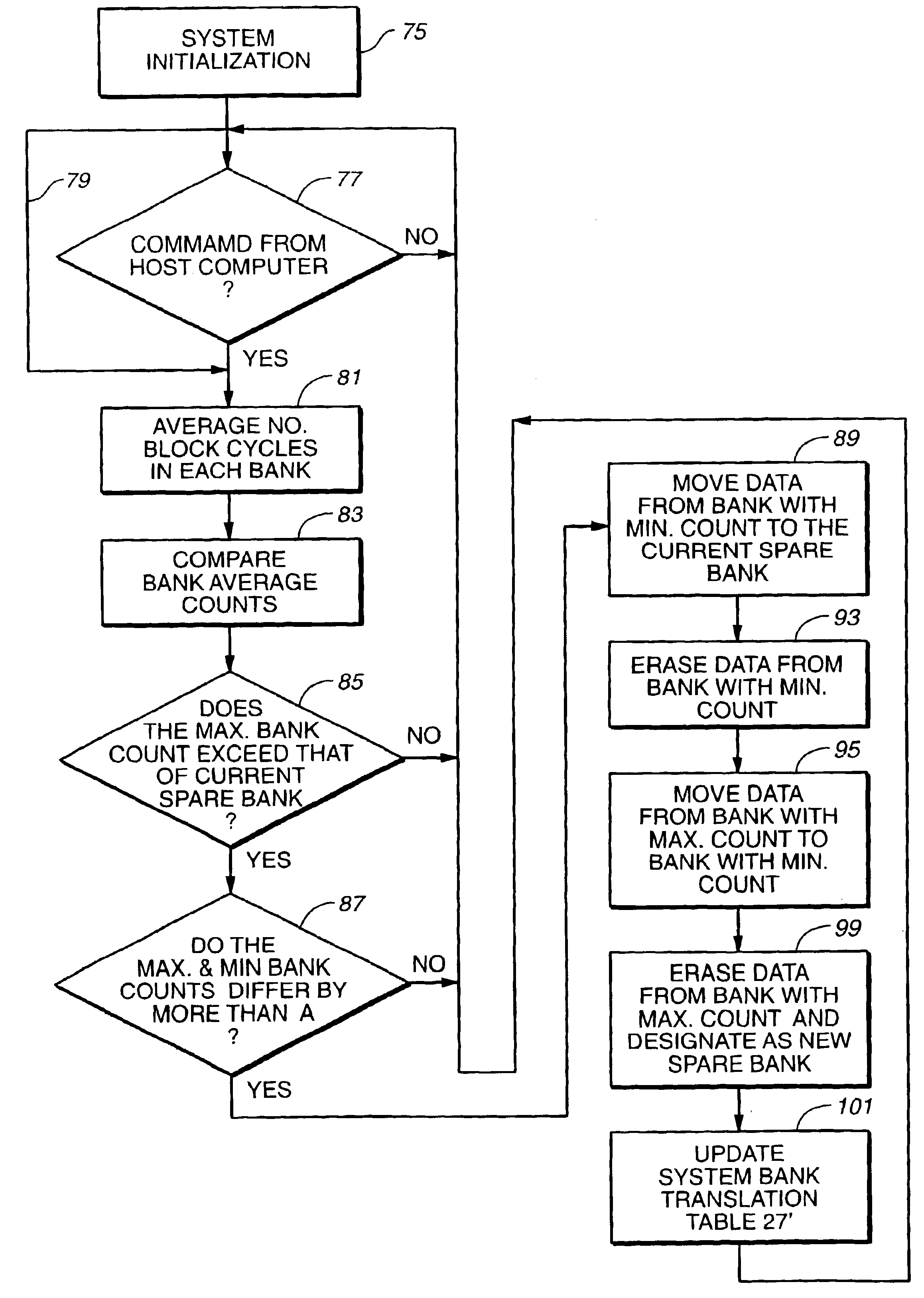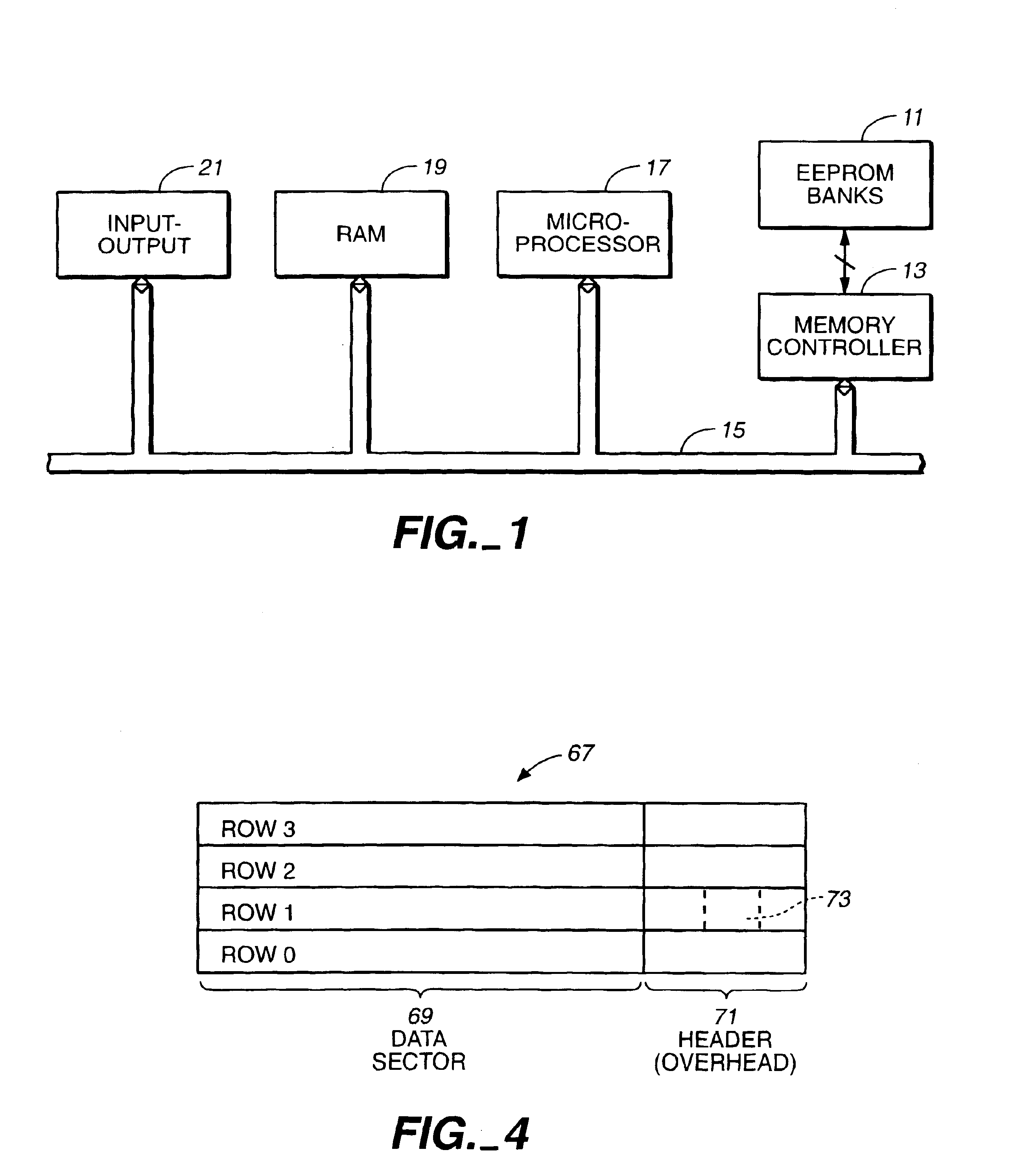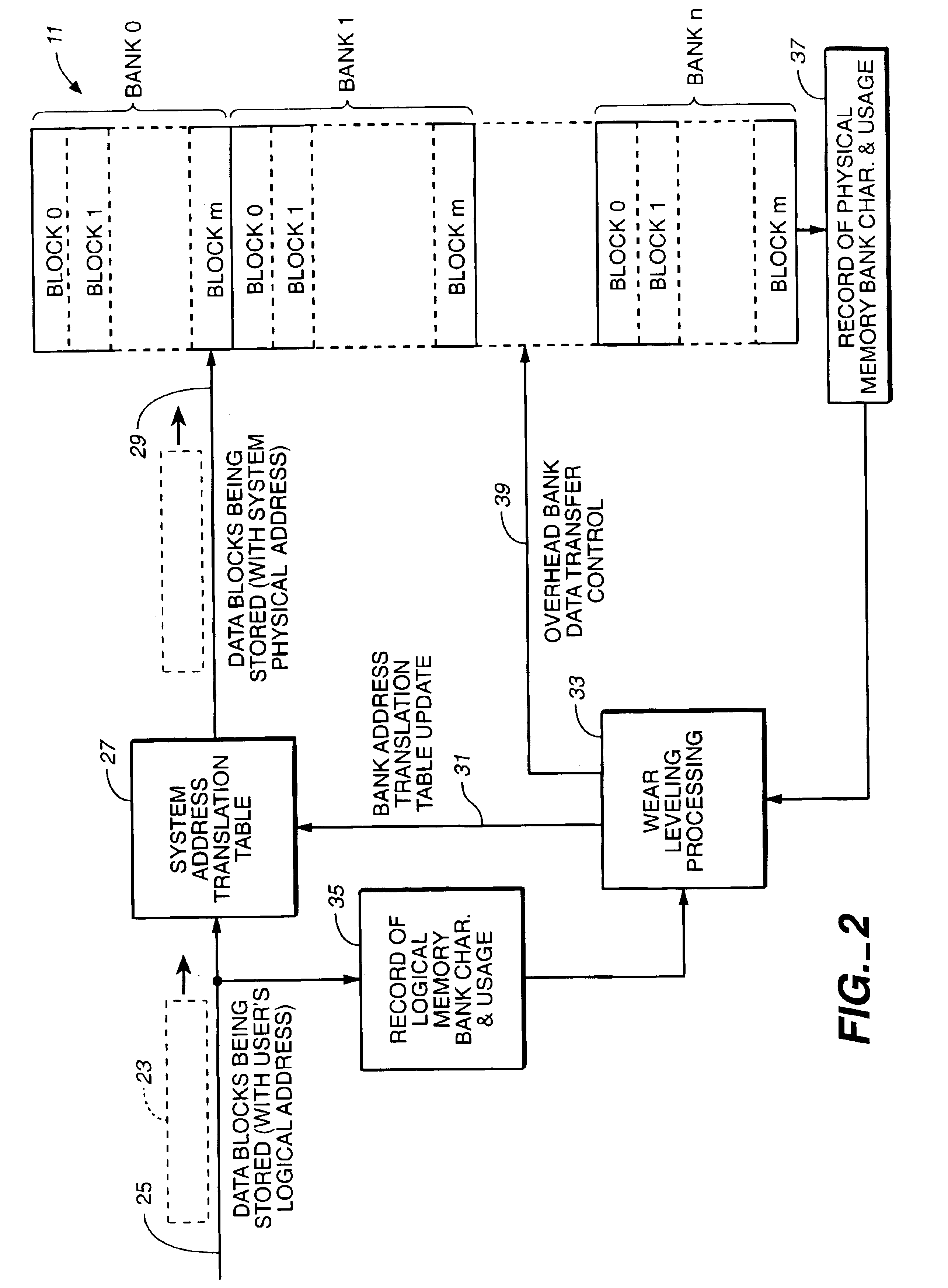Wear leveling techniques for flash EEPROM systems
a technology of flash eeprom and leveling techniques, applied in the field of mass digital data storage systems, to achieve the effect of extending the lifetime of the overall memory system, reducing the risk of wear and tear, and increasing the storage capacity
- Summary
- Abstract
- Description
- Claims
- Application Information
AI Technical Summary
Benefits of technology
Problems solved by technology
Method used
Image
Examples
Embodiment Construction
In order to set forth one environment in which the improved memory system of the present invention may be utilized, FIG. 1 shows a general computer system that includes flash EEPROM memory array 11 whose operation is controlled by a memory controller 13. The memory system 11 and 13 is connected to a computer system bus 15, to which also are connected a system controlling microprocessor 17, random access memory (“RAM”) 19, input / output circuits (“I / O”) 21, and various other components as appropriate for a specific computer system. In the improvements being described, the memory controller 13 manages operation of the EEPROM memory 11 in a way to maximize the lifetime of the memory system by avoiding uneven use of any one part of it.
FIG. 2 is a diagram which conceptually and generally illustrates such a memory operation technique as well as showing various alternatives for specific implementations of the technique. The EEPROM memory 11 is organized into a large number of blocks of flas...
PUM
 Login to View More
Login to View More Abstract
Description
Claims
Application Information
 Login to View More
Login to View More - R&D
- Intellectual Property
- Life Sciences
- Materials
- Tech Scout
- Unparalleled Data Quality
- Higher Quality Content
- 60% Fewer Hallucinations
Browse by: Latest US Patents, China's latest patents, Technical Efficacy Thesaurus, Application Domain, Technology Topic, Popular Technical Reports.
© 2025 PatSnap. All rights reserved.Legal|Privacy policy|Modern Slavery Act Transparency Statement|Sitemap|About US| Contact US: help@patsnap.com



